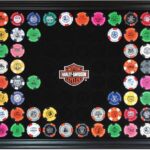I. The Art of Vintage Synth Restoration: Techniques and Tools
II. Creative Modding Ideas for Classic Synthesizers
III. The Benefits of Upcycling: Sustainability and Unique Sound Creation
The Art of Vintage Synth Restoration: Techniques and Tools
If you’re a synth enthusiast or a musician looking to breathe new life into a vintage synthesizer, you’ve landed in the right place! Restoring a vintage synth is not just about fixing it; it’s about reviving a piece of musical history and embracing the unique character that comes with it. Let’s dive into the art of vintage synth restoration, exploring some essential techniques and tools to help you along the way.
Understanding the Basics
Before we get our hands dirty, it’s crucial to understand the basic components of a synthesizer. Vintage synths often have unique architectures, so familiarizing yourself with the circuitry, signal flow, and typical issues that arise can give you a solid foundation. Here are a few common areas to check:
- Power Supply: The lifeblood of any synthesizer. Ensure it’s functioning properly, as power issues can lead to bigger problems down the line.
- Capacitors: Often the first components to fail in older equipment, they can lead to distorted sounds or complete non-functionality.
- Keys and Switches: Sticky keys or unresponsive switches can drastically affect playability.
Key Restoration Techniques
Once you’ve identified the components that need attention, it’s time to roll up your sleeves! Here are some effective techniques to restore your vintage synth:
- Cleaning: Use isopropyl alcohol and cotton swabs to gently clean circuit boards and connectors. This can clear up many issues related to corrosion and dirt buildup.
- Capacitor Replacement: If you’re comfortable with soldering, replacing old capacitors can significantly improve sound quality. Just be sure to check the specifications to match the original components.
- Reed and Potentiometer Care: For synths with mechanical switches or rotary pots, using a contact cleaner can revive their functionality. Spray a small amount into the component and rotate it a few times.
Essential Tools for the Job
Having the right tools can make all the difference in your restoration project. Here’s a handy list to keep in mind:
- Screwdrivers: A set of precision screwdrivers is essential for accessing internal components.
- Soldering Iron: A reliable soldering iron is a must-have for any electrical work.
- Multimeter: This tool helps you measure voltage, current, and resistance, making it easier to diagnose electrical issues.
- Cleaning Supplies: Keep a good stock of isopropyl alcohol, cotton swabs, and soft brushes on hand for cleaning purposes.
Finding Resources and Community Help
Finally, don’t hesitate to tap into the wealth of knowledge available online. Forums, YouTube channels, and social media groups are filled with fellow vintage synth lovers who are eager to share tips and tricks. Whether you’re looking for specific restoration advice or troubleshooting help, the community can be an invaluable resource.
Restoring a vintage synth can be a labor of love, but the rewards—both in sound and satisfaction—are well worth it. So, grab your tools, get inspired, and let the music of the past flow through your hands!
Creative Modding Ideas for Classic Synthesizers
If you’re a synth enthusiast, you know that classic synthesizers hold a special kind of magic. Their rich, warm tones and unique character are unmatched in today’s digital world. But what if you could take that magic and sprinkle a little bit of your own creativity on top? That’s where the art of modding comes in! Whether you’re looking to enhance functionality, modify sounds, or just make your synth truly yours, there’s a world of creative possibilities waiting for you.
1. Upgrade Your Oscillator
One of the easiest and most impactful mods you can start with is upgrading your oscillator. Many classic synths come with basic oscillators that can be improved for a richer sound. Try replacing the existing components with higher-quality capacitors or even introducing a new waveform generator. You’d be surprised at how much this can breathe new life into your vintage unit!
2. Add a MIDI Retrofit
Incorporating MIDI capabilities into your vintage synth can open up a whole new world of possibilities. Adding a MIDI retrofit allows you to connect your synth to modern setups, making it easier to integrate with DAWs or other hardware. Look for kits that are specifically designed for your synth model; these can often simplify the process and maintain the integrity of your vintage gear.
3. Explore Filter Modifications
The filter is one of the most significant components of a synthesizer’s sound palette. By tweaking the filter circuit, you can create a range of sounds that can take your music to unexpected places. Some modders even add additional filter types, such as a band-pass or notch filter, to expand the sonic landscape. Experimenting with the cut-off frequency and resonance can lead to some delightful discoveries!
4. Custom Enclosures and Finishes
Why not make your vintage synth a visual standout too? Custom enclosures can not only protect your gear but also reflect your personal style. Consider using materials like wood or metal to create a unique housing. You could even experiment with different colors or finishes! This kind of mod is both aesthetic and functional, ensuring your synth looks as good as it sounds.
5. Add Effects and Processing
Integrating effects directly into your synth can give you a one-stop shop for sound design. Whether it’s a distortion circuit, chorus, or delay, you can add these effects at the hardware level, allowing you to manipulate the sound before it leaves your synth. This can be particularly fun for those who love to experiment with sound textures.
6. Use Alternative Power Supplies
Many vintage synthesizers were built to run on now-obsolete power supplies. Instead of searching for vintage parts, consider modifying your synth to run on a modern power supply. This not only ensures reliable operation but can also reduce noise and improve overall performance. Plus, it’s a great way to keep your beloved synth functional for years to come!
In conclusion, modding your classic synthesizer can be a rewarding experience that bridges the gap between nostalgia and innovation. Each modification is a chance to express your unique sound and style. So grab your soldering iron, unleash your creativity, and let your classic synth become a personal masterpiece!
When we talk about synthesizers, we often think of their rich sounds and iconic designs. However, there’s a crucial aspect we can’t overlook—the environmental impact of our musical hobbies. Enter the world of upcycling! This practice not only champions sustainability but also opens up a treasure trove of creativity for sound designers and musicians alike. Let’s dive into the benefits of upcycling vintage synthesizers, shall we?
Embracing Sustainability
First and foremost, upcycling is a fantastic way to reduce waste. Many vintage synthesizers, once considered obsolete, find new life when they’re lovingly restored or repurposed. Instead of sending these old beauties to landfills, musicians can give them a second chance. This not only helps the planet but also preserves the rich history and craftsmanship of these instruments.
Unique Sound Creation
One of the most exciting aspects of upcycling vintage synthesizers is the potential for unique sound creation. When you modify an old synth, you’re not just restoring it; you’re transforming it into something entirely new. Here are some ideas for how upcycling can lead to those one-of-a-kind sounds:
- Custom Circuitry: By changing out components or adding new circuitry, you can create entirely new sound signatures. Imagine swapping out a filter for one from a different era; the results can be astonishing!
- Physical Modifications: Think outside the box—literally! Adjust the physical layout of the synthesizer or replace knobs and switches for a personalized feel. The tactile experience can inspire new musical ideas.
- Hybrid Instruments: Combine parts from different synthesizers to create a hybrid instrument. Mixing the oscillator of one synth with the filter of another can yield unexpected and delightful results!
Fostering Community and Collaboration
Upcycling also fosters a sense of community among musicians and synth enthusiasts. Many people share their projects online, offering inspiration and advice to others looking to undertake their own restorations or modifications. This collaborative spirit creates a rich ecosystem where knowledge flows freely. You can even participate in local workshops or forums that focus on synth repair and modding, connecting with others who share your passion.
Cost-Effective and Accessible
Let’s not forget that upcycling can be a cost-effective way to grow your synthesizer collection. Vintage synths can often be found at garage sales, flea markets, and online marketplaces at reasonable prices. With a little time, effort, and creativity, you can turn these hidden gems into functional and inspiring tools for your music-making.
Final Thoughts
In a world increasingly focused on sustainability, upcycling vintage synthesizers presents an opportunity to merge creativity with environmental consciousness. By embracing this practice, you’re not only enriching your own musical journey but also contributing to a more sustainable future. So, roll up your sleeves, dive into those old synths, and let your imagination soar!










Comments